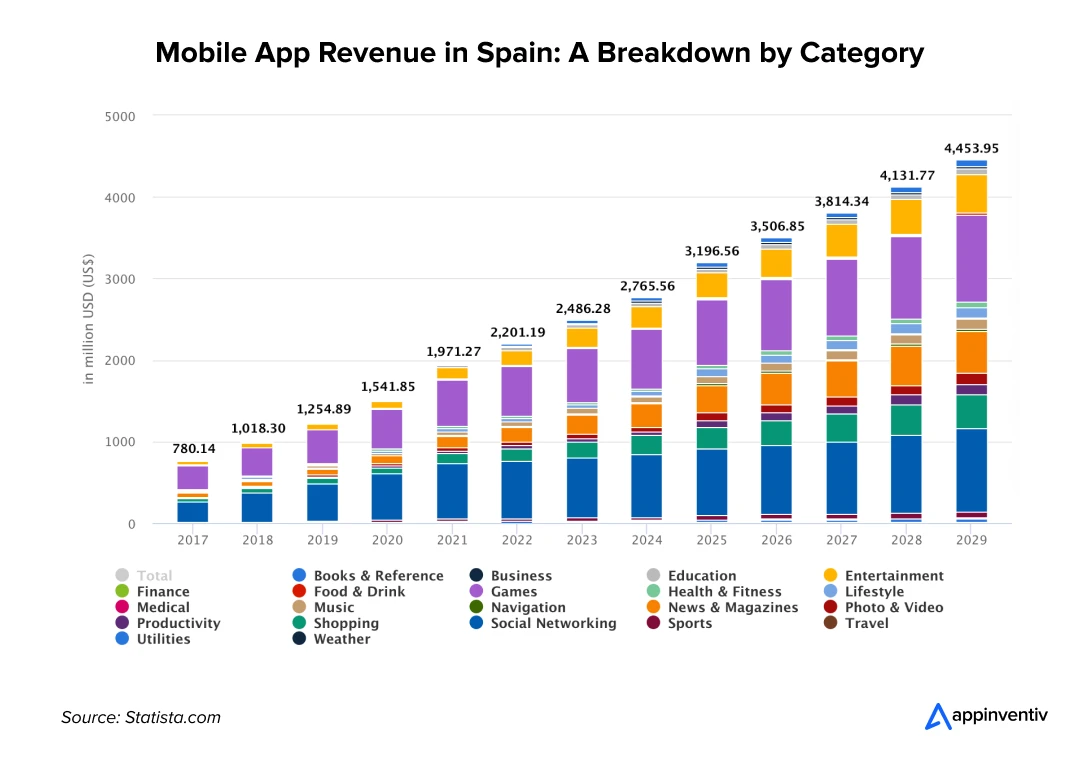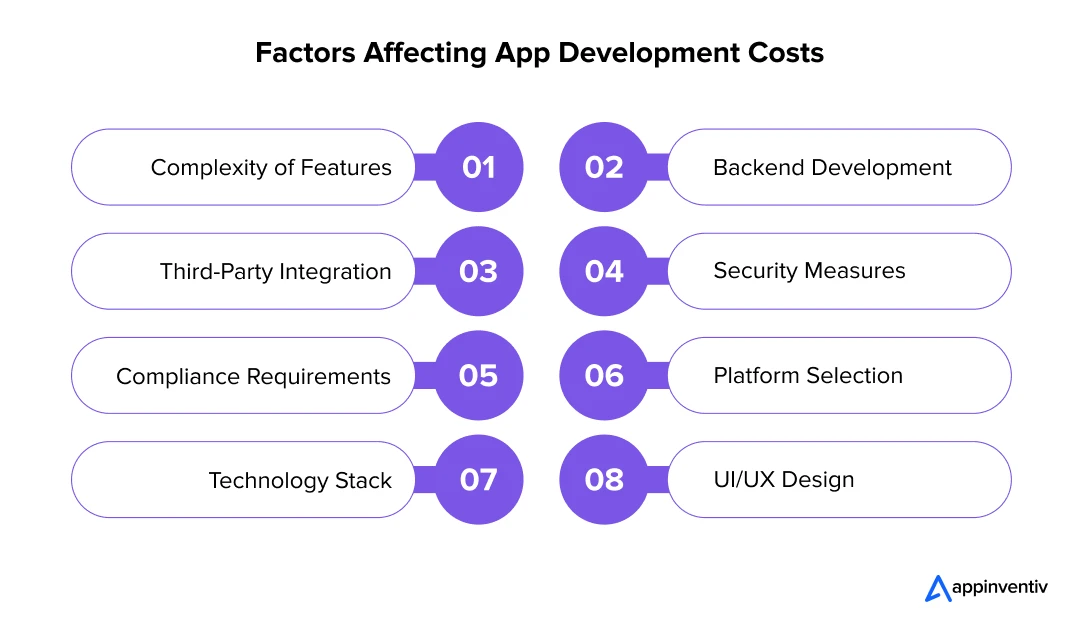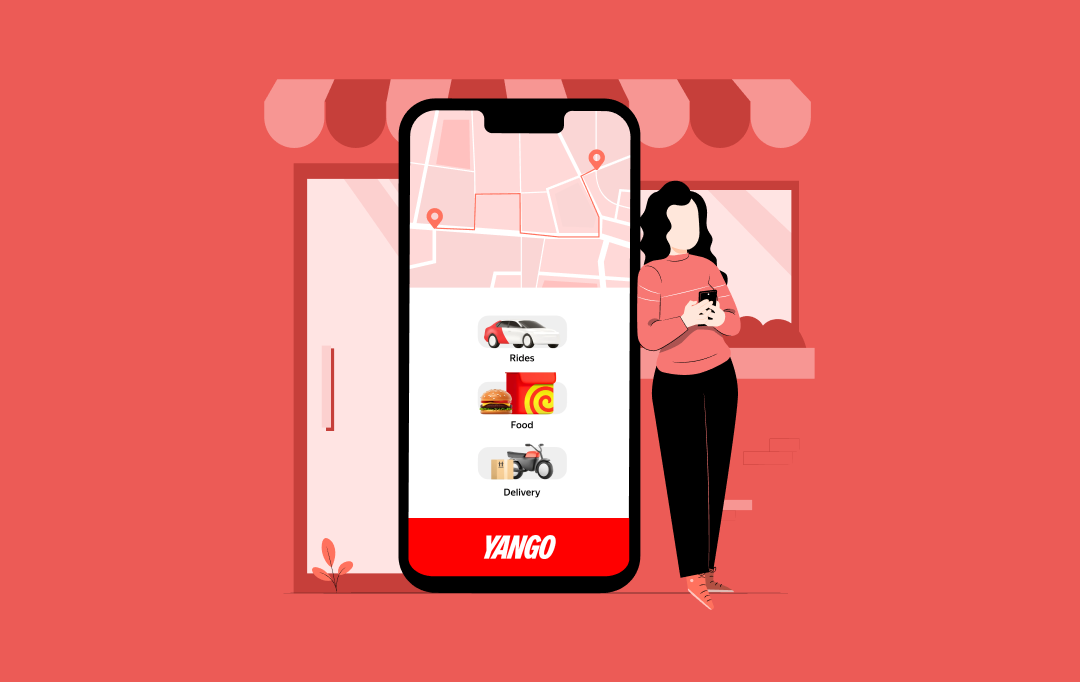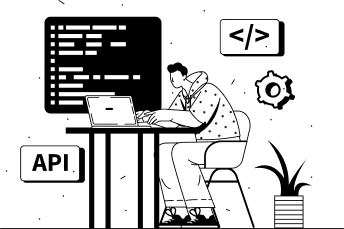- Comprehensive Cost Breakdown for App Development in Spain
- 1. App Complexity
- 2. Development Stages
- Key Factors Driving the Cost to Build a Mobile App in Spain
- Complexity of Features
- Complexity of Backend Development
- Third-Party Integrations
- Security measures
- Regulatory Compliances
- Platform Selection
- Technologies Selections
- UI/UX Design
- Hidden Cost to Develop a Mobile App in Spain
- 1. Legal and Licensing Charges
- 2. App Hosting and Cloud Services
- 3. Post-launch Care
- 4. Marketing and Promotion
- How to Optimize Your Mobile Application Development Cost
- Build an MVP
- Cross-Platform Development
- Prioritize Necessary Features
- Outsource to Cost-effective Regions
- How to Develop an App in Spain - A Step-by-Step Process
- 1. Validate Your Idea
- 2. Plan Your Scope
- 3. Pick the Right Development Approach
- 4. Focus on UI/UX Design
- 5. Build Your App
- 6. Test and Fix Issues
- 7. Launch Your App
- 8. Ongoing Maintenance & Updates
- Best Monetization Strategies for Mobile Apps
- 1. In-App Ads – Keep Them Useful
- 2. In-App Purchases (IAP) – Sell Digital Items
- 3. Subscription Models – Steady Revenue Stream
- 4. Web3 & Blockchain Monetization – Future Growth
- 5. Other Smart Monetization Ideas
- Bring Your Mobile App Concept to Life in Spain with Appinventiv
- FAQs
With the rapid rise in mobile device usage, expected to reach 18.22 billion by 2025, the demand for mobile applications has surged globally, and Spain is no exception. Businesses increasingly use mobile apps to enhance customer engagement, streamline operations, and drive efficiency. According to Statista, the Spanish mobile app market is showing a strong growth trajectory, projected to reach €4.45 billion by 2029, with an annual growth rate of 8.65%.

As the market of mobile apps grows, so does the cost of app development in Spain, leaving businesses to ask, How much does it cost to build a mobile app in Spain?
Well, the answer is not straightforward. On average, the cost to create a mobile app in Spain ranges between $30,000 – $300,000 / €27,500 – €275,000, depending on several factors. From sleek startup apps to feature-packed enterprise solutions, costs vary widely, and understanding the key cost-determining factors can help you budget smartly.
This blog discusses what affects app development costs and how to budget smartly to turn your idea into a reality without overspending.
Discuss your project idea with us to get a more accurate estimate.
Comprehensive Cost Breakdown for App Development in Spain
Understanding the expenses associated with creating a mobile app in Spain requires considering several elements that affect the cost of mobile app development. From the app’s complexity to the development phases, a thorough analysis aids businesses and developers in efficiently planning their mobile app development budget in Spain.
1. App Complexity
The app development price in Spain can differ widely based on the app’s complexity.
Here is a projected expense range categorized by app type:
| App Type | Cost Range | Examples |
|---|---|---|
| Basic Apps | $30,000 – $80,000 / €27,500 – €73,300 | Calculators, To-Do List Apps |
| Medium Complexity | $80,000 – $100,000 / €73,300 – €91,600 | eCommerce Platforms, Social Media Apps |
| Advanced Apps | $100,000 – $300,000+ / €91,600 – €275,000+ | On-demand Services, Real-Time Apps |
2. Development Stages
Mobile App Development in Spain generally consists of four key phases: validating ideas, design, development, and testing. The expense of developing a mobile app in Spain rises as you advance through these phases. Here’s a summary:
| Stage | Cost Range | Details |
|---|---|---|
| Idea Validation | $1,100 – $5,500 / €1,000 – €5,000 | Research, feasibility studies, and market validation. |
| Design | $5,500 – $22,000 / €5,000 – €20,000 | UI/UX design, wireframes, and user interface creation. |
| Development | $11,000 – $55,000+ / €10,000 – €50,000+ | Coding and programming of app features (core development). |
| Testing | $3,300 – $11,000 / €3,000 – €10,000 | Bug fixing, user acceptance testing (UAT), and quality assurance. |
Here’s an overview of each phase of app development:
- Idea Validation: This phase includes market research and feasibility analyses to confirm the app’s concept. In Spain, the expense for app development during this phase varies between €1,000 and €5,000.
- Design: In this case, a mobile application development service in Spain will develop wireframes, prototypes, and user interfaces. Depending on the intricacy of the design, expenses may vary from €5,000 to €20,000.
- Development: Most development expenses are allocated to programming and creating the application. The cost of mobile app development in Spain can vary from €10,000 to over €50,000 based on the app’s features and complexity.
- Testing: Ensuring quality is crucial for providing a refined product. Testing includes correcting bugs and incorporating user feedback, with expenses ranging from €3,000 to €10,000.
How to Estimate App Development Cost in Spain: A Simple Formula
The cost of developing a mobile app in Spain is primarily determined by two key factors: the total development hours and the hourly rate of the development team. A straightforward formula can help estimate the overall budget:
| Development Hours × Hourly Rate = Total Cost |
|---|
Key Factors Driving the Cost to Build a Mobile App in Spain
Various important factors shape the Mobile App Development Cost in Spain. These factors encompass app intricacy, technology selections, platform compatibility, UI/UX design, etc. In the following sections, we delve into these factors more thoroughly, employing statistics, practical examples, and comparative information to offer an in-depth insight into the costs associated with mobile app development in Spain.

Complexity of Features
The application’s intricacy and its functionalities significantly affect the cost of app development in Spain. The development costs can differ considerably based on the kind of app. Here’s a table outlining the different price ranges according to the features’ complexity:
| Feature | Estimated Cost |
|---|---|
| Basic Features (Account setup, Secure logins, balance tracking) | $30,000–$50,000 / €27,300 – €45,500 |
| Advanced Features (AI investment advice, real-time analytics) | $100,000–$200,000 / €91,000 – €182,000 |
For example, an eCommerce platform or ride-hailing service that includes functionalities such as live tracking and payment systems would be classified as medium complexity features, resulting in expenses between $80,000 – $100,000 or €73,300 – €91,600.
Complexity of Backend Development
Backend development is often one of the most significant cost drivers when considering the cost of building a mobile app. Unlike the user-facing front end, the back end is where all the core functionalities happen — handling data, managing business logic, ensuring security, and integrating third-party services. The complexity of backend development can greatly impact both the time and cost.
Costs vary widely, starting from $10,000 / €9,200 for a basic backend and exceeding $100,000 / €91,500 for highly complex systems. While backend development requires a higher investment, it ensures smooth functionality, data security, and future scalability, making it a critical factor in mobile app development costs.
Third-Party Integrations
Integrating third-party services like payment gateways (Stripe, PayPal), social media logins, and GPS tracking enhances an app’s functionality but adds to development costs. Each API integration can cost $1,000 – $6,000 / €920 – €5,500, with ongoing maintenance further adding to the overall cost. The more services an app integrates, the more time and budget it requires.
Security measures
Strong security is essential to protect user data and prevent cyber threats. Security features like data encryption, multi-factor authentication, and regular security audits ensure a secure backend but increase costs. Developers must follow the best secure data storage and communication practices, especially for apps handling sensitive information like financial transactions or healthcare data.
Regulatory Compliances
Apps that deal with payments, healthcare, personal data, or other sensitive aspects must comply with industry regulations like PCI DSS, GDPR, or HIPAA. Ensuring compliance requires additional coding, audits, and legal reviews, which add to development time and costs. Non-compliance can result in hefty fines and legal issues, making it a necessary investment.
Platform Selection
Another key factor influencing the mobile app development cost in Spain is platform selection (iOS, Android, or both.) Native development ensures optimal performance and user experience but can be more time-intensive. On the other hand, cross-platform frameworks like Flutter or React Native provide a cost-effective alternative. This allows businesses to build one app that runs seamlessly on both platforms with a single codebase. This approach reduces development time and expenses while maintaining a seamless device experience.
- Native apps (Swift/Kotlin) – Most expensive, ranging from $40,000 – $100,000+ / €36,600 – €91,500+ per platform.
- Cross-platform apps (Flutter/React Native) – More cost-effective, ranging from $25,000 – $100,000 / €22,900 – €91,500.
- Hybrid apps (Ionic, Cordova) – Least expensive, starting from $25,000 – $50,000 / €22,900 – €45,800, but with limited native capabilities.
Technologies Selections
Picking the right tech stack for your mobile app is an important decision—it affects everything from development costs and timelines to performance, security, and scalability. For instance,
- Native apps (Swift for iOS, Kotlin/Java for Android) offer the best performance and deep OS integration but are costly as they require separate development for each platform.
- Cross-platform frameworks (React Native, Flutter) allow code reuse across platforms, reducing costs while maintaining near-native performance.
- Hybrid apps (Ionic, Cordova) use web technologies for faster development but may lack full native functionality.
UI/UX Design
UI/UX design of an application can greatly influence the user experience and total development expenses. Applications that feature minimalist designs are less expensive, whereas highly interactive designs and visually appealing animation drive up the costs.
| Design Type | Cost Impact | Example |
|---|---|---|
| Minimalist Design | $5,000 – $8000 / £4,000 – £6,400 | Basic functionality, simple layout |
| Interactive Design | $8,000 – $10,000 / £6,4,000 – £8,000 | Custom animations, advanced graphics |
| Highly Complex Design | $10,00 – $15,000 / £8,000 – £12,000 | Detailed UI, custom animations, transitions |
For instance, an eCommerce application featuring a simple design may be priced at approximately $10,000 / £8,000, while a gaming application or one with very interactive features could exceed $15,000 / £12,000.
Hidden Cost to Develop a Mobile App in Spain
Although calculating the direct cost to create a mobile app in Spain is crucial, there are numerous hidden expenses that companies need to take into account. These expenses frequently emerge after the launch or throughout the development phase, impacting the overall budget and long-term sustainability of the app.
1. Legal and Licensing Charges
Certain apps require licensing for third-party software, APIs, or proprietary technologies. The cost varies depending on the features integrated. For instance, apps incorporating AR, VR, or AI often need specialized licenses, adding to the overall expense. Additionally, regulatory compliance, especially for FinTech or healthcare apps, may require legal considerations, further increasing costs.
2. App Hosting and Cloud Services
A reliable hosting solution is crucial for seamless app performance, data storage, and security. Cloud platforms like AWS, Google Cloud, and Microsoft Azure offer scalable hosting, typically on a subscription basis. While initial costs may seem low, expenses can escalate as the app scales, ranging from €100 to €1,000 per month depending on usage, storage, and computing power.
3. Post-launch Care
After deployment, ongoing maintenance is essential to ensure optimal performance, security, and compatibility with evolving OS updates. This includes bug fixes, feature enhancements, and periodic updates to align with user expectations. Businesses should allocate at least 15-20% of the initial development cost annually for maintenance to keep the app competitive and functional.
4. Marketing and Promotion
After launch, marketing campaigns can greatly inflate the budget, meaning if one employs SEO, ASO, or paid advertisements, they have to ensure the costs are not beyond what was intended.
How to Optimize Your Mobile Application Development Cost
You could require immense funds to develop an App in Spain, but if a good strategy is employed, it can considerably lower the costs. Whether it is an eCommerce app, an on-demand service app, or an enterprise solution, the right means of optimizing the cost of building a mobile app in Spain will always create maximum value while keeping quality intact.
To reduce the costs associated with creating a mobile app in Spain, focus on the below-listed strategies that eliminate unnecessary expenditures while preserving the app’s quality and performance:
Build an MVP
Focus on building a Minimum Viable Product (MVP)—a version of your app with only the core features necessary for launch. This allows you to:
- Save money by developing only what’s needed.
- Launch faster and start collecting user feedback.
- Validate your idea before investing in expensive advanced features.
- Make improvements based on real user data, ensuring that future updates align with customer needs.
Cross-Platform Development
Instead of developing separate applications for iOS and Android, cross-platform frameworks like React Native or Flutter should be used. This can significantly reduce development time and costs, as you only need to write the code once.
Prioritize Necessary Features
One of the biggest mistakes businesses make is trying to build a feature-heavy app from day one, which increases costs and development time. Thus, you must prioritize essential features for app development.
Outsource to Cost-effective Regions
Hiring an in-house development team can be expensive. Thus, a smart move will be to outsource your app development project to cost-effective regions like Eastern Europe, India, or Southeast Asia. Outsourcing can cut costs by 40-60% without sacrificing quality.
How to Develop an App in Spain – A Step-by-Step Process
Building a mobile app in Spain follows a structured process, from idea to launch and beyond. Here’s a simple breakdown of the key steps:
1. Validate Your Idea
First, ensure your app has a real need. Talk to potential users, understand their pain points, and refine your idea based on their feedback. If there’s no demand, it’s not worth the investment.
2. Plan Your Scope
Avoid unnecessary features that drive up costs. Define your app’s core functionalities and determine the full project requirements before development starts.
3. Pick the Right Development Approach
Choose between native, cross-platform, or hybrid development. Native apps (Swift, Kotlin) perform best, while cross-platform options (Flutter, React Native) save time and money with a single codebase.
4. Focus on UI/UX Design
A great user experience is key to building a successful app. While designing UI/UX, work on easy navigation, clean visuals, and smooth interactions. Start with wireframes and prototypes before moving into development.
5. Build Your App
Skilled developers will bring your app to life. Using agile development, they can adapt to changes and improve features continuously.
6. Test and Fix Issues
Before launch, strong mobile app testing strategies are needed to fix bugs, optimize performance, and ensure device compatibility.
7. Launch Your App
Submit it to the App Store and Google Play, ensuring it meets all their requirements.
8. Ongoing Maintenance & Updates
Apps require constant updates to stay relevant. Regular bug fixes, performance improvements, and new features keep users engaged.
Don’t get left behind—chat with our top-tier app developers to bring your app dreams to life.
Best Monetization Strategies for Mobile Apps
If you’re building a mobile app, making money isn’t just adding ads. Users prefer a smooth experience, so the key is monetizing without making the app difficult. Here are some of the best ways to do that in 2025:
1. In-App Ads – Keep Them Useful
Ads can work well if they don’t disrupt the user experience.
- Rewarded Video Ads – Users watch an ad to get extra rewards, like extra lives in games or bonus content (used by Duolingo).
- Non-Intrusive Interstitial Ads – These ads appear at natural pauses and can offer benefits, like unlocking features.
- Native Ads – These ads match the app’s design, so they feel part of the experience (platforms like InMobi help with this).
- In-App Messages – Messages inside the app (like Spotify’s premium upgrade pop-ups) can guide users to paid features.
2. In-App Purchases (IAP) – Sell Digital Items
- Virtual Goods – Sell in-game coins, special outfits, or power-ups (a major revenue source in mobile gaming).
- Contextual Offers – Show personalized discounts or limited-time deals based on user behavior.
- Exclusive Content – Offer unique digital items or collectibles (some apps even use NFTs).
3. Subscription Models – Steady Revenue Stream
- Ad-Free Version – Charge users to remove ads and get an uninterrupted experience.
- Premium Features – Offer extra tools, advanced content, or regularly updated features.
- Tiered Subscriptions – Provide different pricing levels with increasing benefits.
4. Web3 & Blockchain Monetization – Future Growth
- NFT-Based Memberships – Users can buy exclusive memberships using NFTs.
- Tokenized Rewards – Reward user engagement with digital tokens.
5. Other Smart Monetization Ideas
- Gamification – Add challenges, leaderboards, and incentives to keep users engaged.
- Personalized Offers – Offer discounts or bundles based on user activity.
- App Store Optimization (ASO) – Improve your app’s ranking so more people find and download it.
Bring Your Mobile App Concept to Life in Spain with Appinventiv
Spain is quickly becoming a prominent center for mobile app development in Europe, featuring a dynamic tech ecosystem and skilled developers. Whether you are aiming to create a mobile app for iOS, Android, or both, Spain provides a distinct advantage with its talented developers, advantageous business climate, and a cooperative atmosphere.
To develop a mobile app in Spain largely relies on comprehensive planning and choosing the appropriate development partner. Clearly outline your app’s objectives, functionalities, and financial plan to prevent extra expenses and holdups. In addition, the skill and trustworthiness of the development firm you select are crucial to the overall quality of the final results.
When evaluating your choices, Appinventiv emerges as a reliable leader in mobile app development company in Spain. Having a proven track record of developing 3000+ innovative, scalable, and user-centric applications, Appinventiv provides customized solutions to bring your concept to life. Our skilled team of 1600+ app developers guarantees that your application is created effectively adheres to your mobile app development budget in Spain, and is designed for lasting success.
Don’t believe us? Get a sneak peek of our expertise by peeping into the case studies of Mudra, Mudra, KFC, Adidas, Edfundo, etc. These successful projects highlight our experience building cutting-edge mobile applications for all sizes of businesses across industries.
We chose Appinventiv to build our financial literacy and money management app from start to finish. We were impressed with Appinventiv’s professionalism, expertise, and commitment to delivering top-notch results from the first call. Our app is now live, and the feedback we receive from users is fantastic. So, I highly recommend Appinventiv to anyone looking for a partner to bring their app ideas to life.

Whether you want to develop a user-friendly mobile app from scratch, want to upgrade the existing one or simply want to the cost to build a mobile app in Spain, our app development service in Spain will help bring your app idea to life.
FAQs
Q. How to hire an app development company in Spain?
A. When hiring a mobile app development company in Spain, you need to consider several critical aspects, such as:
- Experience – Choose a reputed and experienced company with a portfolio of 200+ apps to ensure proven expertise.
- Technical Skills – Hire mobile app developers in Spain proficient in iOS, Android, and cross-platform frameworks like React Native or Flutter.
- Hiring Models – Choose between dedicated teams, hourly contracts, or fixed-price projects, depending on your budget and timeline.
- Vetting – Use developer vetting platforms to assess technical and communication skills before hiring.
- Check Live Apps – Review the developer’s previously launched apps to assess their quality.
- Post-Launch Support – Ask about maintenance and long-term support to ensure app updates and bug fixes are covered.
Q. How much does it cost to build a mobile app in Spain?
A. There’s no one-size-fits-all approach to answer how much app development costs in Spain. The final price depends on the app’s complexity, platform, and development stages. On average, the cost of developing a mobile app in Spain ranges from $30,000 – $300,000 / €27,500 – €275,000 or more.
Q. What is the timeline for mobile app development in Spain?
A. The timeline for app development in Spain varies depending on several critical components, particularly the app’s complexity. For instance, a simple app may take 4 to 6 months, while a complex app can require 9 to 12 months or more.
Q. How do you keep app development costs within budget?
A. Follow the below-listed strategies to keep app development costs within budget:
- Define a clear project scope to avoid unnecessary expenses and delays.
- Choose the right development approach—hybrid for cost savings, native for performance, and cross-platform for balance.
- Use open-source tools like Apache Cordova or Bootstrap to cut costs.
- Implement Agile development for flexibility and controlled spending.
- Start with an MVP to minimize initial costs and refine features based on user feedback.
- Keep UI/UX simple to reduce design expenses while maintaining usability.
- Invest in cloud-based infrastructure (AWS, Google Cloud, Azure) for scalability and cost efficiency.
- Pre-development planning and prototyping help control costs by refining ideas before full-scale development.



10 Industry-Wise 5G Use Cases Transforming Australian Businesses
Key takeaways: Industry Transformation: 5G is revolutionizing key sectors in Australia, including healthcare, manufacturing, agriculture, and logistics, by enabling real-time data processing, enhanced connectivity, and automation that improve operational efficiency and customer experiences. Enhanced Connectivity for Regional Areas: 5G technology bridges the connectivity gap in remote and regional areas of Australia, supporting industries like agriculture…

How to Build a Secure App in Australia in 2025? All You Need to Know
In today’s hyper-connected world, mobile apps aren’t just conveniences; they are the baseline of modern business. From banking and healthcare to retail and government services, apps power our daily lives. But this digital revolution has a dangerous downside: cyberattacks are escalating alarmingly. More than data exposure, this security breach costs businesses a lot, destroys customer…

How to Build a Ride-Hailing App Like Yango Ride?
Dubai's streets are buzzing with innovation. The city is fast becoming a playground for smart mobility, from AI-driven traffic systems to autonomous taxis. In the middle of it all, the decision to build an app like Yango has brought serious traction, offering seamless, affordable, and tech-savvy transport alternatives. But here’s the thing: success in this…

















